Comments / Questions (107)
![]() CAtherine Kloczkowski wrote:
CAtherine Kloczkowski wrote:
This answer to June - 07.11.2022 - 15:45 Dear June, correct, A.1 is a rib worked (K1 twisted, P1) from RS and (K1, P1 twisted) from WS - read more about diagrams here. Happy knitting! 08.11.2022 - 09:25 Is not correct. It doesn't make a rib. The WS should start with the P1 twisted, then K1. I see what you are trying to do, but it is just confusing to not write it out in the order it will be knit.
20.12.2025 - 19:52
![]() Chata wrote:
Chata wrote:
Bonjour, Bravo pour la diversité des produits et des modèles que vous proposez. La DROPS Merino ultra fine est superbe, surtout pour ce modèle "Visit Viena" et ses côtes torses. Le modèle est juste un peu court mais facile à rallonger. A bientôt
12.12.2025 - 17:27
![]() Jane wrote:
Jane wrote:
I have tried needles up to size 5.5 mm so far for the tension test and on this it’s still way too small on the length. It’s coming out at almost the 10cm across the 20 stitches but way too short on the 26 rows - only measuring 7.5cm Please help as I don’t know what’s best to do now?
09.12.2025 - 10:50
![]() Liv-Merethe wrote:
Liv-Merethe wrote:
Hei. Kan jeg bare strikke både forstykke og bakstykke i ett på rundpinne, altså str. S, 206 masker, ønsker også bare å droppe mønster, og bare strikke vanlig vrangbord nederst, rundt armene og halsen, det går vel greit?
06.12.2025 - 20:28DROPS Design answered:
Hei Liv-Merethe, Det går helt fint. Vennlig hilsen, Drops Team.
08.12.2025 - 08:00
![]() María wrote:
María wrote:
Hola, me podría decir como se hace el derecho e izquierdo retorcido? M. Gracias.
22.11.2025 - 18:49DROPS Design answered:
Hola María, se trabaja retorcido trabajando en el bucle posterior del punto en vez de en el bucle anterior/delantero. También puedes ver un vídeo sobre cómo trabajar el derecho retorcido y cómo trabajar el revés retorcido.
24.11.2025 - 00:45
![]() Gauron wrote:
Gauron wrote:
Bonjour. Je ne tricote pas en aiguilles circulaires mais en droites. Peut-on adapter le modèle et si oui comment ? merci d'avance cordialement catherine g
17.11.2025 - 18:01DROPS Design answered:
Bonjour Mme Gouron, dans ce modèle, seul le col se tricote en rond, il vous suffira alors juste de faire la couture d'une épaule, de relever les mailles pour tricoter le col en allers et retours et de terminer par la couture de l'autre épaule + le col. Découvrez ici quelques astuces pour adapter un modèle sur aiguilles droites. Bon tricot!
18.11.2025 - 08:33
![]() Susan Nichols wrote:
Susan Nichols wrote:
Thank you for the response, but I checked the pattern again on line and it has no "x"s in it at all. Please send me a new page 6 with the corrected pattern as I have no idea where the 2 stitches are that you mentioned.
12.11.2025 - 20:06DROPS Design answered:
Hi again, Susan, The diagram for A.1 is just above the size chart (a small diagram with 2 squares in width and 4 squares in height). The left hand squares in the diagram have crosses. We have checked the US translation and the diagram is there. Regards Drops Team.
13.11.2025 - 06:45
![]() Susan Nichols wrote:
Susan Nichols wrote:
A1 is all blank blocks. Is that correct?
12.11.2025 - 02:26DROPS Design answered:
Hi Susan, A.1 has both open squares and squares with crosses. The diagram is read from bottom up, right to left from the right side and left to right from the wrong side. A.1 has 2 stitches in each row: Knit 1 twisted, purl 1 repeated from the right side , and knit 1, purl 1 twisted when working back from the wrong side. Regards, Drops Team.
12.11.2025 - 06:38
![]() Susan Nichols wrote:
Susan Nichols wrote:
Could you send me a video of “knit-twisted” and “purl-twisted”.
12.11.2025 - 01:34DROPS Design answered:
Hi Susan, Here is a video of how to knit twisted: https://www.garnstudio.com/video.php?id=1852&lang=us Purl twisted is the same method (purl through the back of the stitch) as knit twisted. Regards, Drops Team.
12.11.2025 - 06:43
![]() Gabriela wrote:
Gabriela wrote:
Perdón no me quedó claro lo de disminuir después del elástico, o entendí mal? Gracias
07.11.2025 - 16:03
Visit Vienna#visitviennaslipover |
|||||||
 |
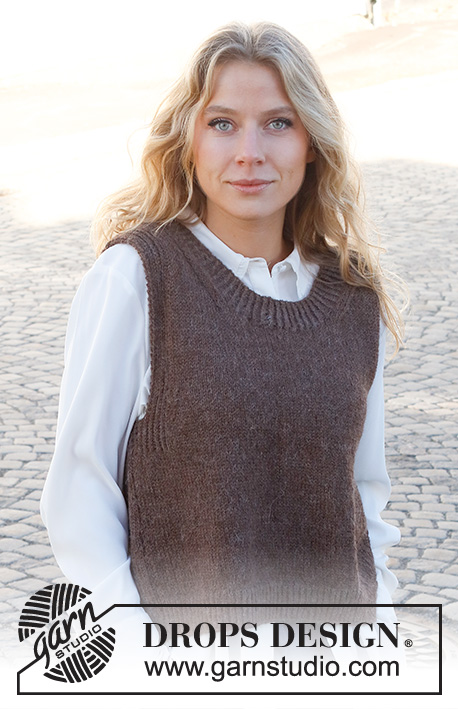 |
||||||
Knitted vest / slipover in DROPS Puna. The piece is worked with ribbed edges. Sizes S - XXXL.
DROPS 227-9 |
|||||||
|
------------------------------------------------------- EXPLANATIONS FOR THE PATTERN: ------------------------------------------------------- RIDGE/GARTER STITCH (worked back and forth): Knit all rows. 1 ridge = knit 2 rows PATTERN: See diagram A.1. The diagram shows all rows in the pattern from the right side. DECREASE TIP-1 (evenly spaced): To work out how to decrease evenly, count the total number of stitches on needle (e.g. 103 stitches) minus the edge stitches (e.g. 2 stitches) and divide the remaining stitches by the number of decreases to be made (e.g. 17) = 5.9. In this example decrease by knitting together approx. each 5th and 6th stitch. Do not decrease the edge stitches. DECREASE TIP-2 (armholes): All decreases are worked from the right side! Decrease at the beginning of row: Work the first 11 stitches as before, slip 1 stitch as if to knit, knit 1 and pass the slipped stitch over the knitted stitch (= 1 stitch decreased). Decrease at the end of row: Work until there are 13 stitches left, knit 2 together and work to end of row (= 1 stitch decreased). DECREASE TIP-3 (neck): All decreases are worked from the right side! After the neck: Work 1 edge stitch in garter stitch, 2 stitches in stocking stitch, slip 1 stitch as if to knit, knit 1 and pass the slipped stitch over the knitted stitch (= 1 stitch decreased). Before the neck: Work until there are 5 stitches left, knit 2 together and work to end of row (= 1 stitch decreased). CASTING-OFF TIP: To avoid the cast-off edge being tight you can cast off with a larger size needle. If the edge is still tight, make 1 yarn over after approx. each 4th stitch at the same time as casting off; the yarn overs are cast off as normal stitches. ------------------------------------------------------- START THE PIECE HERE: ------------------------------------------------------- VEST – SHORT OVERVIEW OF THE PIECE: The piece is worked in sections, back and forth on the needle and then sewn together. The neck is worked to finish. BACK PIECE: Cast on 103-113-121-133-149-163 stitches (including 1 edge stitch on each side) with circular needle size 3.5 mm and DROPS Puna. Purl 1 row from the wrong side, then work rib from the right side as follows: 1 edge stitch in GARTER STITCH – read description above, work A.1 until there are 2 stitches left, work the first stitch in A.1 (so the pattern is symmetrical) and 1 edge stitch in garter stitch. Continue this rib back and forth for 5 cm – adjust so the next row is from the right side. Knit 1 row where you decrease 17-19-19-21-25-27 stitches evenly spaced – read DECREASE TIP-1 = 86-94-102-112-124-136 stitches. Change to circular needle size 4.5 mm. Purl 1 row from the wrong side. Continue with stocking stitch and 1 edge stitch in garter stitch on each side. REMEMBER THE KNITTING TENSION! When the piece measures 22-23-24-25-26-27 cm, work pattern as follows from the right side: 1 edge stitch in garter stitch, A.1 over the next 12-12-12-14-16-18 stitches, stocking stitch until there are 13-13-13-15-17-19 stitches left, purl 1, A.1 over the next 11-11-11-13-15-17 stitches and 1 edge stitch in garter stitch. Continue this pattern. When the piece measures 25-26-27-28-29-30 cm (the rib on each side measures 3 cm – adjust to work next row from the right side), work as follows: Cast off the first 4-4-4-6-8-10 stitches for the armholes at the beginning of the next 2 rows (cast off with knit) = 78-86-94-100-108-116 stitches. The next row from the right side is worked as follows: 1 edge stitch in garter stitch, pattern as before over the next 8 stitches, work stocking stitch until there are 9 stitches left, pattern over the next 8 stitches and 1 edge stitch in garter stitch. Continue this pattern. On the next row from the right side, decrease 1 stitch on each side for the armholes – read DECREASE TIP-2! Decrease like this each row from the right side a total of 1-3-5-6-8-10 times = 76-80-84-88-92-96 stitches. When the piece measures 46-48-50-52-54-56 cm, cast off the middle 36-36-40-40-44-44 stitches for the neck and each shoulder (= 20-22-22-24-24-26 stitches) is finished separately. On the next row from the right side, decrease 1 stitch for the neck – read DECREASE TIP-3! Decrease like this each row from the right side a total of 2 times = 18-20-20-22-22-24 stitches. Continue with pattern and stocking stitch until the piece measures 50-52-54-56-58-60 cm. Cast off with knit over knit and purl over purl. Work the other shoulder in the same way. FRONT PIECE: Cast on and work as for the back piece. When the piece measures 35-37-37-39-39-41 cm (there are 76-80-84-88-92-96 stitches on the needle), place the middle 18-18-20-20-24-24 stitches on a thread for the neck and each shoulder (= 29-31-32-34-34-36 stitches) is finished separately On the next row from the right side, decrease 1 stitch for the neck – remember DECREASE TIP-3! Decrease like this each row from the right side a total of 11-11-12-12-12-12 times = 18-20-20-22-22-24 stitches. Continue with pattern and stocking stitch until the piece measures 50-52-54-56-58-60 cm. Cast off with knit over knit and purl over purl. Work the other shoulder in the same way. ASSEMBLY: Sew the shoulder seams inside the cast-off edge. Sew the side seams inside the 1 edge stitch. NECK: Start from the right side at one shoulder seam and knit up 120 to 148 stitches (including the stitches from the thread) inside the 1 edge stitch, with short circular needle size 3.5 mm and DROPS Puna. The number of stitches must be divisible by 2; make sure the neck is neither too loose nor too tight. Work A.1 in the round over all stitches for 4½ cm. Cast off with knit-twisted over knit-twisted and purl over purl – read CASTING-OFF TIP. |
|||||||
Diagram explanations |
|||||||
|
|||||||
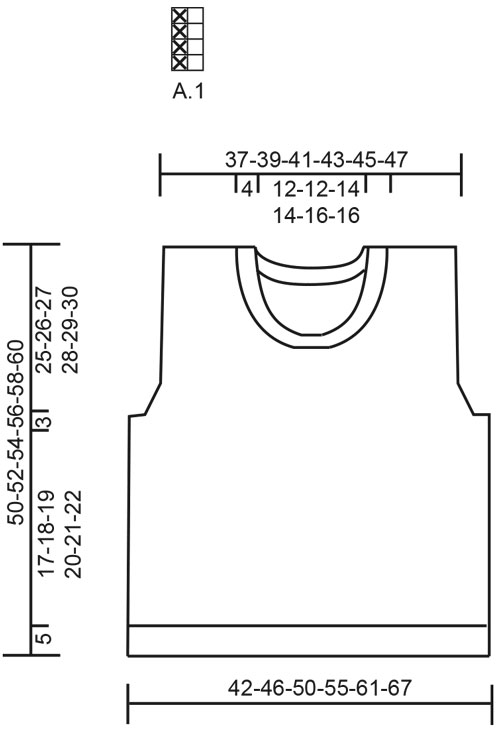 |
|||||||
Have you finished this pattern?Tag your pictures with #dropspattern #visitviennaslipover or submit them to the #dropsfan gallery. Do you need help with this pattern?You'll find 28 tutorial videos, a Comments/Questions area and more by visiting the pattern on garnstudio.com. © 1982-2025 DROPS Design A/S. We reserve all rights. This document, including all its sub-sections, has copyrights. Read more about what you can do with our patterns at the bottom of each pattern on our site. |
|||||||







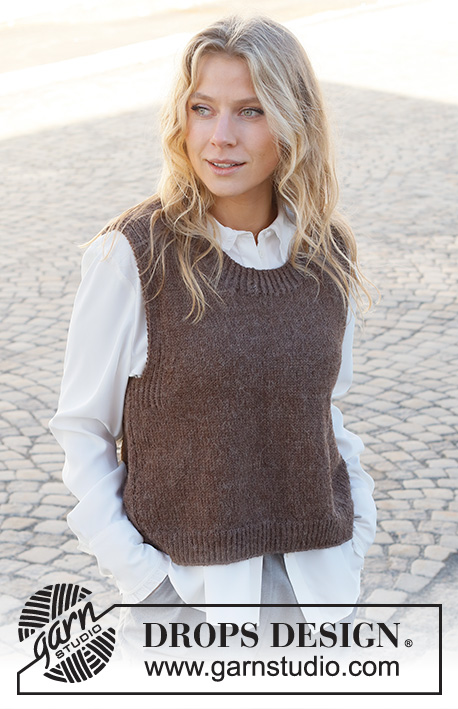
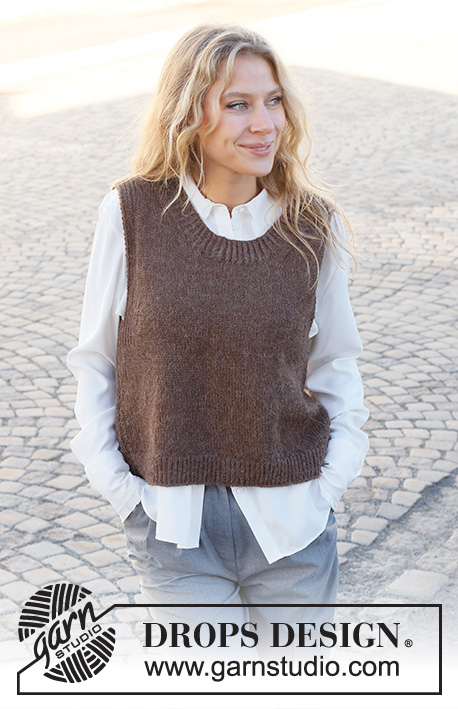
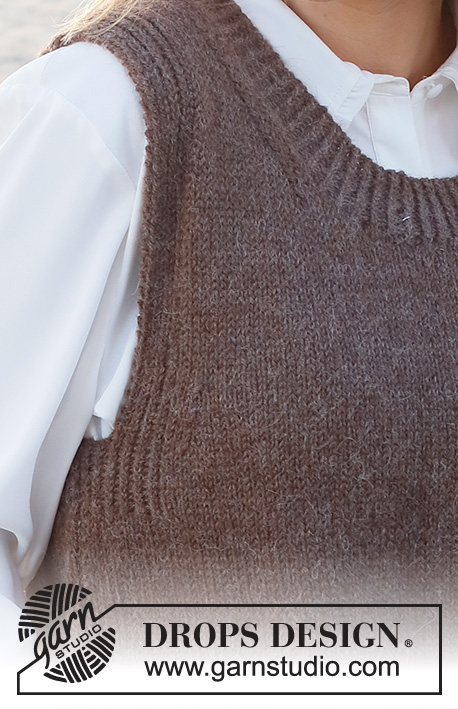

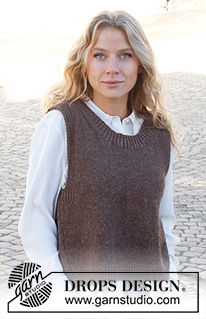
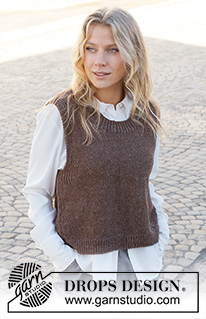
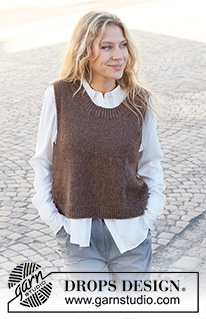
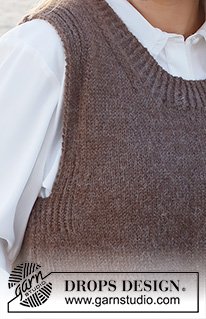

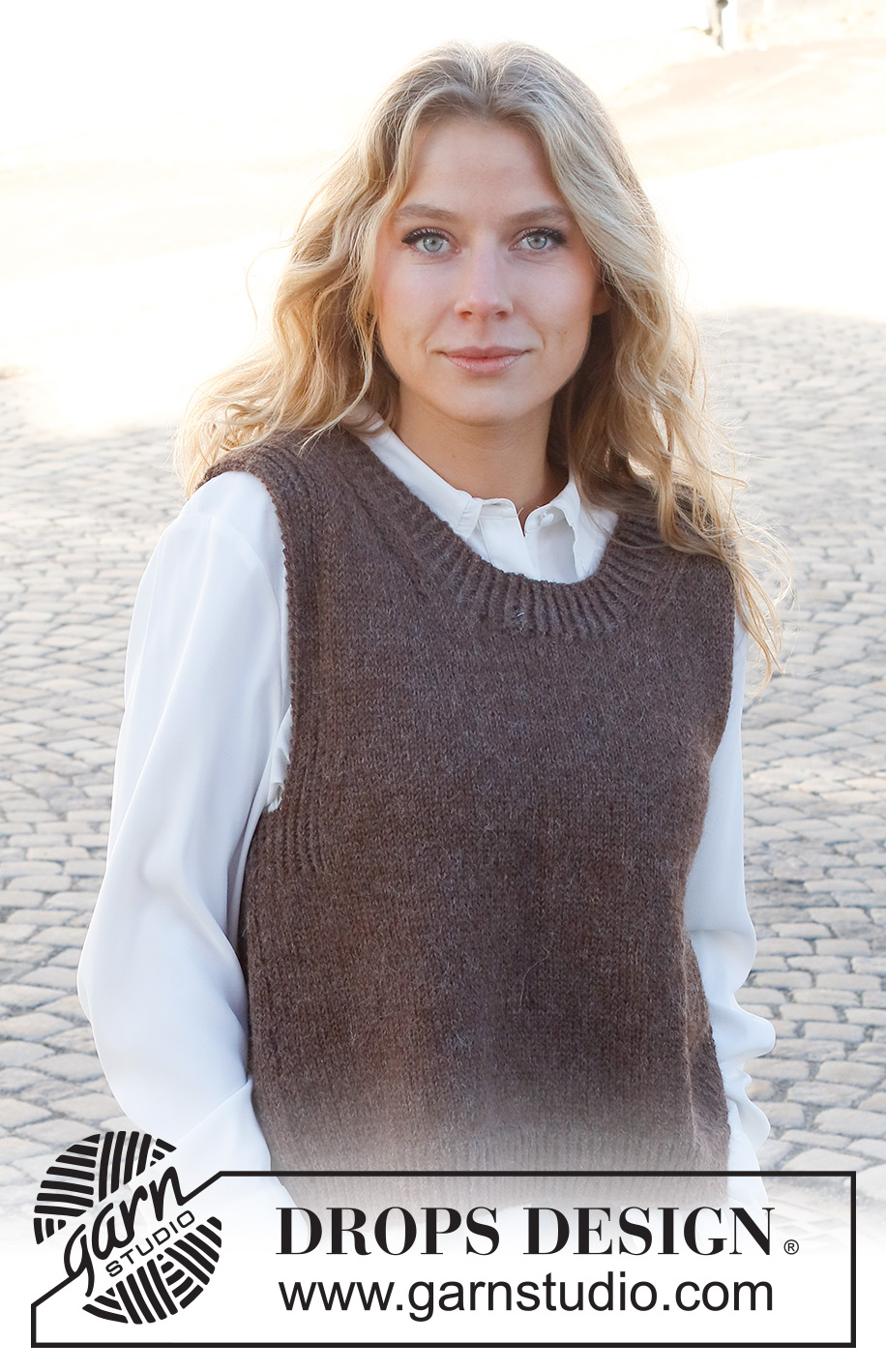
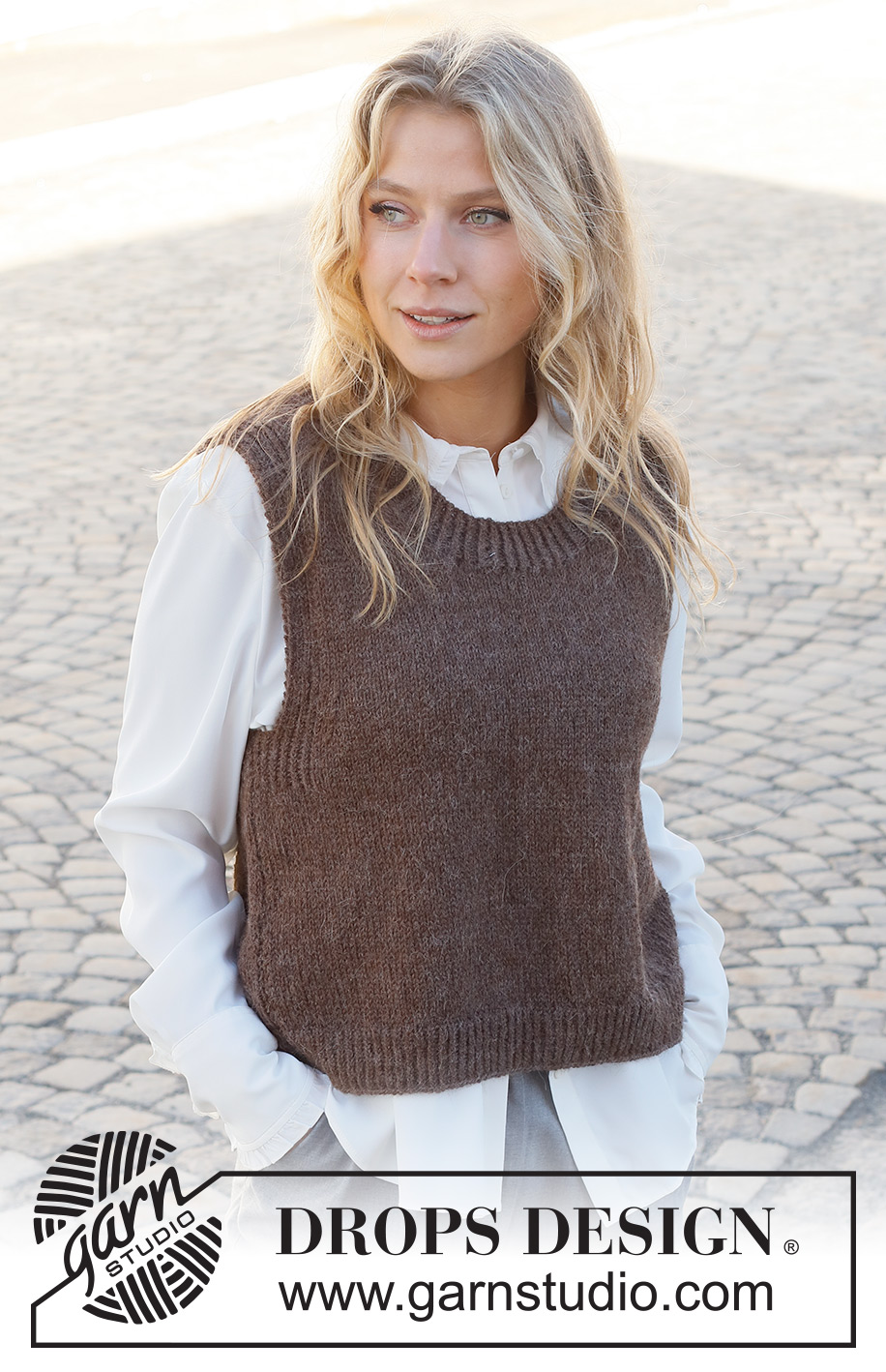

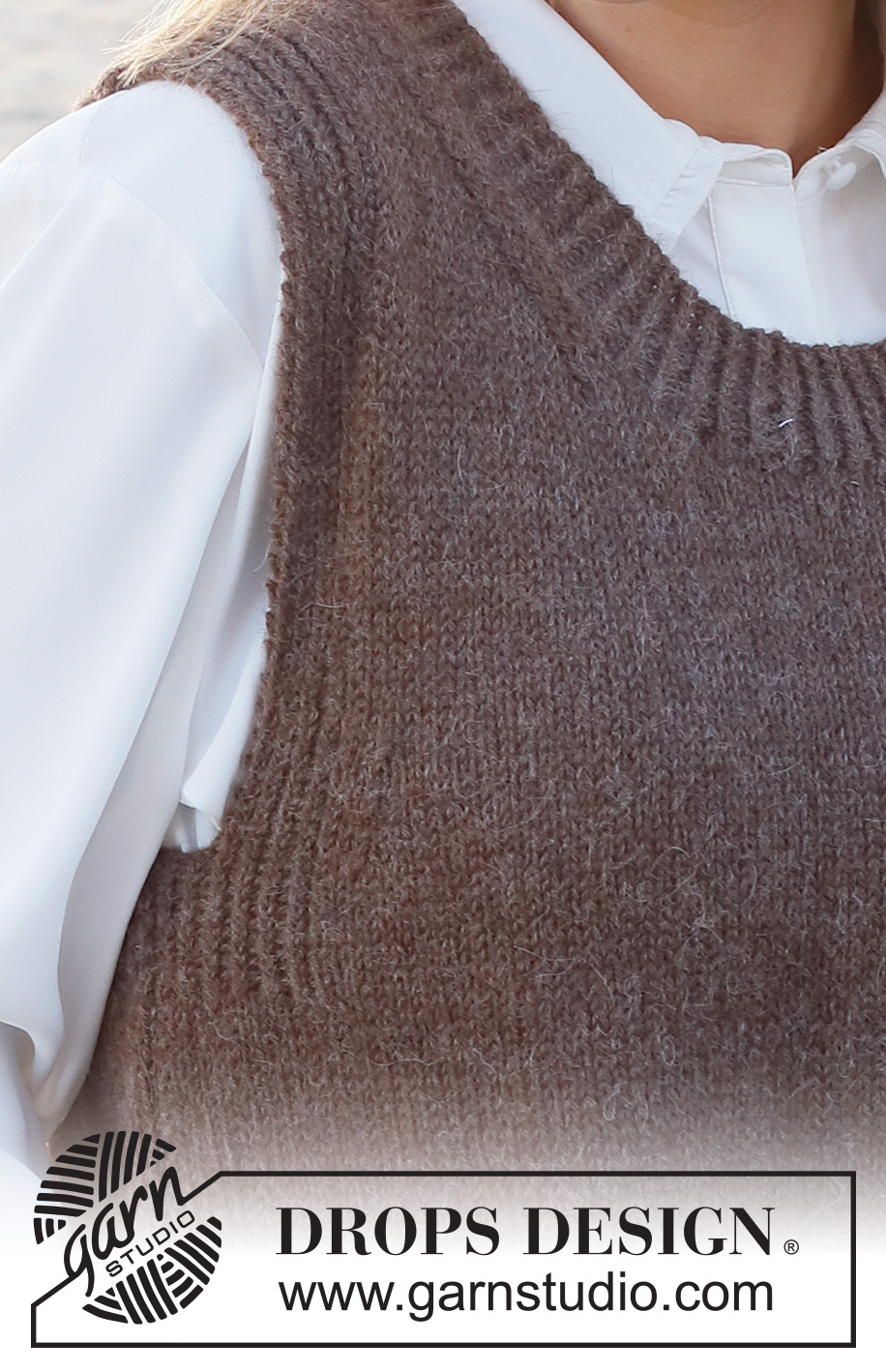


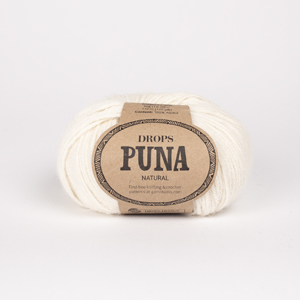
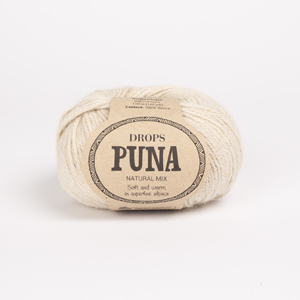














































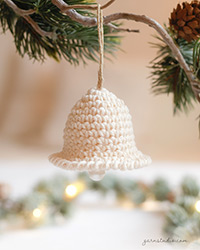
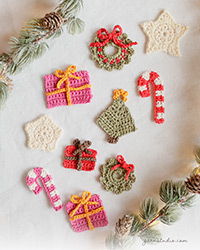

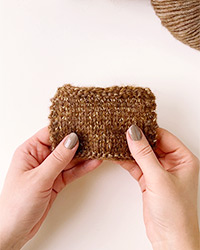
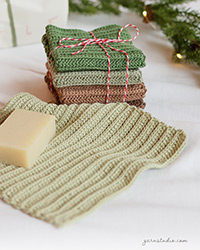
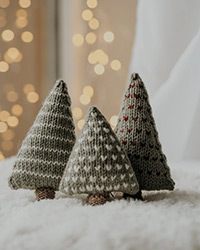
Post a comment to pattern DROPS 227-9
We would love to hear what you have to say about this pattern!
If you want to leave a question, please make sure you select the correct category in the form below, to speed up the answering process. Required fields are marked *.